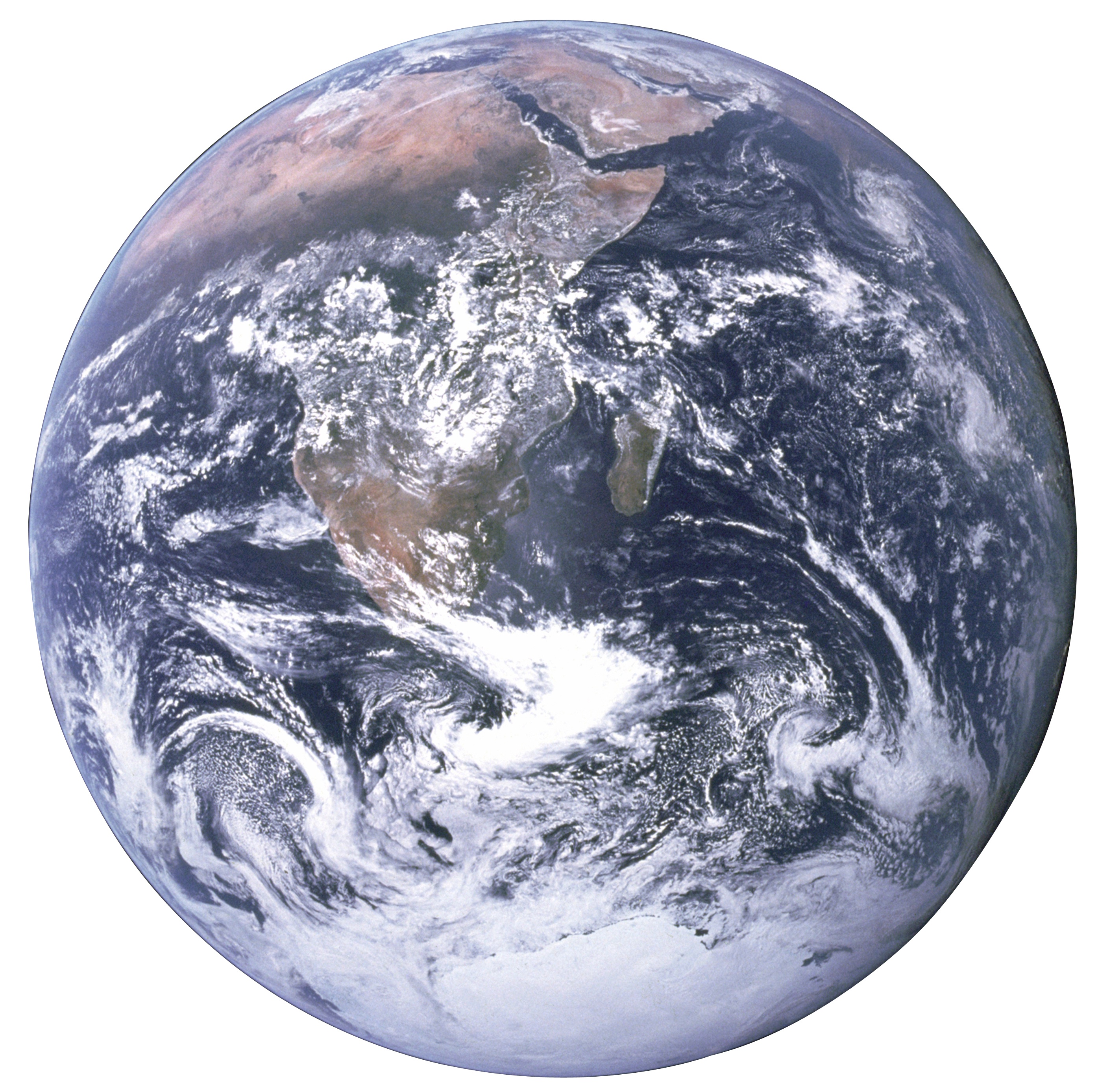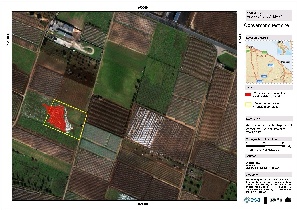Environmental Assessment
Human activities have been negatively affecting the environment in various ways for decades. Intensive agriculture modifies ecosystems, deforestation and irrigation have negative consequences on the natural resource balance, soil degradation occurs for example as a consequence of pesticides use. These are just few examples of the anthropogenic impact our activities have on land resources. The negative impacts have become clear and the international community has started to look for a more reasonable development path, trying to mitigate the negative effects of human activities and to preserve natural resources.
Earth observation satellites play a role in many areas of sustainable development. Remote sensing data are useful inputs for the management and protection of ecological assets. They are precious information to counteract overexploitation of resources, desertification and land degradation and to promote sustainable agricultural practices and biodiversity conservation. They improve mitigation policies, which have the objective of reducing the negative impacts of human activities and natural changes on sensitive ecosystems, and they guide adaptation paths in case consequences become clear and unavoidable.
Environmental assessments are now formal components of public policy designs and of projects implementation in a wide range of domains. The rational is that when choosing policy instruments or picking one project among others, decision makers have to be aware and to take into account the consequences their action will have on the natural environment and to clearly assess the balance between economic benefits and socio-environmental impacts. (2)
The precise difficulty of impact assessment often lies in the evaluation of natural assets: it is often difficult to put a clear number on natural resources and compare their preservation with the economic benefits which their exploitation generates. Government and policy makers need firm arguments, possibly supported by financial information, to demonstrate the value of environment to society. Earth observation provides useful quantitative repeated data to establish baselines, to monitor results, assess impacts and auditing. Hot spot areas can be selected and development policies may be adapted to specific local issues. The knowledge the international community is acquiring is an important instrument to address global issues through sounded policies and practices.
An important initiative in this field is The Economics of Ecosystems and Biodiversity (TEEB), a global project focused on drawing attention to the economic benefits of biodiversity. Its objective is to highlight the growing cost of biodiversity loss and ecosystem degradation. TEEB presents an approach that can help decision-makers recognize, demonstrate and capture the values of ecosystems & biodiversity, including how to incorporate these values into decision-making (3). This is leading to a new concept of natural capital accounting or ‘ecosystems service’ (ES) assessments. These financial approaches to quantifying the economic value of the environment were introduced in the Millennium Assessment report on Ecosystems, and further defined and globally mainstreamed through initiatives as the System of Environmental Economic Accounting (SEEA, 4) by the UN Statistical Division and the partnership for Wealth Accounting and Valuation of Ecosystem Services (WAVES, 5).
The value added of satellite monitoring is that it provides continuous strands of data on different environmental variables which can be regularly monitored at a global scale, leading to objective and comparable datasets which let researchers and authorities identify uncontroversial impact upon which the international community is called to act. Satellite environmental data also represent an invaluable asset in terms of transparency to citizens about the effects economic and social decision have on the natural environment.
References:
(1) ESA 2013, GREEN GROWTH. Earth observation for international development projects
(2) http://ec.europa.eu/environment/eia/eia-legalcontext.htm
(4) https://unstats.un.org/unsd/envaccounting/seea.asp
(5) http://www.wavespartnership.org/en
Products | Ext. Source | Descriptions | Product Standards | Ref. Project |
|---|---|---|---|---|
spatial information maps |
|
|
|
|
Topic | Description | Key words | Reference |
|---|---|---|---|
Development of Land' Earth Observation Requirements as Input to the Defra Earth Observation Strategy | Report in support of the Defra Science Directorate, as a contribution to a developing strategy for facilitating and expanding the uptake of Earth Observation (EO) data within Defra and the wider Defra family – for both spaceborne and airborne data | Earth observation, Land, Space | Defra |
Satellite Environmental Monitoring in Saudi Arabia | News article on environmental monitoring | Earth observation | Geoconnection |
Project - the overall objective of SIBERIA-II is to demonstrate the viability of full carbon accounting (including greenhouse gases (GHGs): CO2, CO, CH4, N2O, NOx) on a regional basis using the environmental tools and systems available | Monitoring, Earth observation. Land | Siberia2 | |
Website - CEH has produced three digital Land Cover Maps which have been successfully used in a wide range of applications over the last 20 years. Details of the three Land Cover Maps and how to access them are provided in this site | Monitoring, Land cover | CEH | |
Pioneering ERS environment satellite retires | News article on ERS-2 satellite | Monitoring, Land cover | ERL |
News article on satellite imaging sensors | Monitoring | SIC | |
Presentation on Legal aspects of satellite monitoring for the compliance and enforcement of environmental law | Monitoring, Space, Land | Envirosecurity | |
Global Land Vegetation Monitoring | Website presenting research on global land vegetation monitoring | Land, vegetation, Satellite, Monitoring | d4science |
Research paper on Classification of Forest Land Information Using Environment Satellite (HJ-1) Data | HJ-1A CCD1 data, image classification, different scale, land use features extraction | mecs-press | |
Case Study Two: The Disposal of Waste on Land and Remote Sensing | Case study on Satellite Monitoring as a Legal Compliance Tool in the Environment Sector | Land, Environment, Satellite monitoring | UCL |
The overview of space applications for environment initiatives | Research paper presenting SAFE overview and current situation of SAFE prototyping | Environment, Satellite | ISPRS |
Research paper outlining the general approach to be followed when planning the use of remote sensing in environmental forensics | Environment, Satellite monitoring, Land | Earthplace | |
Integration between ground-based and space-based measurements for monitoring landfill sites | Research paper investigating the use of multi-temporal Landsat satellite images to monitor waste disposal sites for the Trail Road landfill site in the city of Ottawa, Canada | Landfill Sites, Multi-Temporal Data, Landsat Images, Land Surface Temperature, Environmental Monitoring | Geomaticsksa |
Satellite monitoring of spatio-temporal dynamics of China's coastal zone eco-environments: preliminary analysis on the relationship between the environment, climate change and human behavior | Research paper investigating temporal dynamics of eco-environmental changes in coastal areas of China during 1981-2000 based on four key surface parameters including normalized difference vegetation index (NDVI), thermal index, moisture index and surface broadband albedo derived from quantitative remote sensing techniques and meteorological data (requires purchasing to view full text) | Land, Environment, Satellite monitoring | Cat.Inist |
Monitoring of changes in land use/ land cover using multi- sensor satellite data | Research paper on preparing the multi-date land use/ land cover maps of Allahabad city from multi-sensor satellite data and monitoring changes in various land use/ land cover classes using digital remote sensing techniques. | Land cover, Remote sensing, Satellite data | geospatialworld |
The potential of multi-sensor satellite data for applications in environmental monitoring | Dissertation with special emphasis on land cover mapping, desertification monitoring and fire detection | Satellite, remote sensing, multi-sensor, environment monitoring, desertification, fire, land cover | edoc |
Research paper reviewing the principles of existing remote sensing techniques and new methods particularly suitable for monitoring rural land use changes and their effects on soil conditions | Soil degradation, Environmental monitoring, Earth observation satellites, Airborne hyperspectral data, Spectral mixture analysis, Environmental satellite observatory | ScienceDirect | |
News article defining the range of environmental uses for satellites goes far beyond weather forecasting and human-made disaster monitoring | Global environment, Environmental monitoring, Satellite data | OurWorld | |
Potential Use of NOAA/AVHRR Satellite Data for Monitoring Environmental Change in Turkey | Research paper presenting a potential use of remote sensing for monitoring desertification with AVHRR-derived NDVI (Normalized Difference Vegetation Index) data | Environmental monitoring, Satellite data | Digital commons |
Venezuela to Launch Satellite for Land and Environmental Planning | News article on satellite launch in Venezuela | Satellite data, Land monitoring | venezuelanalysis |



This page has no comments.